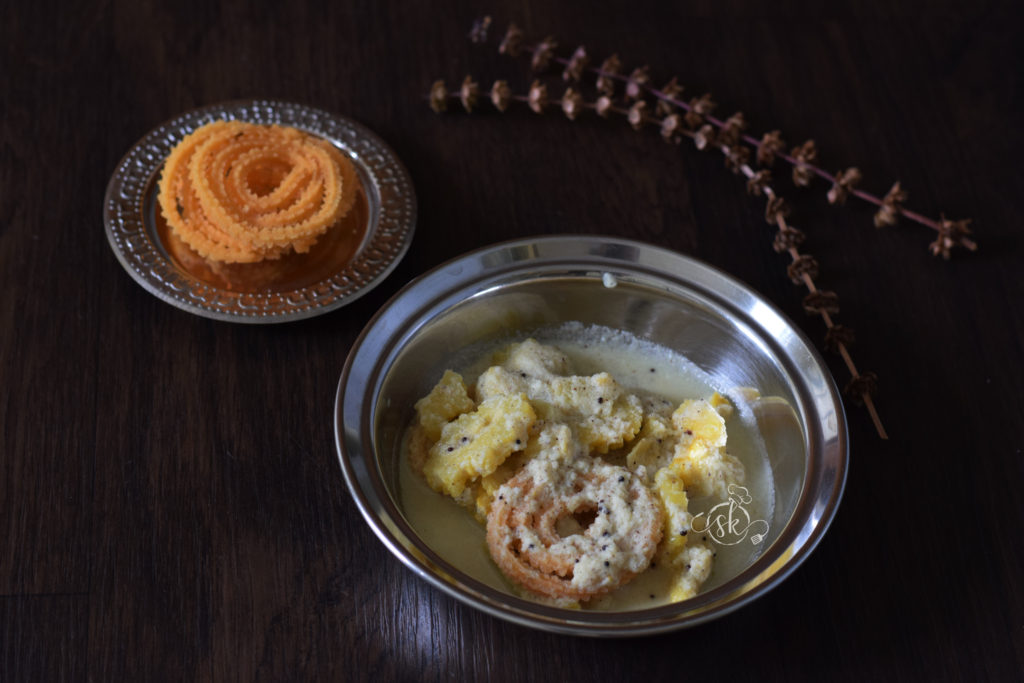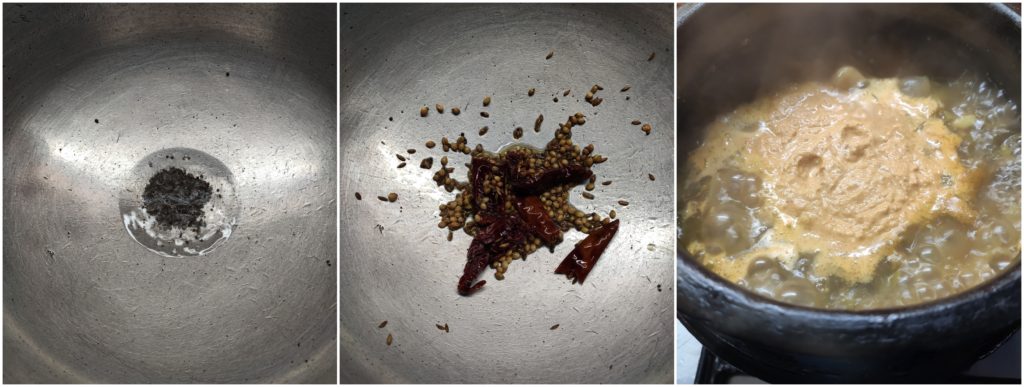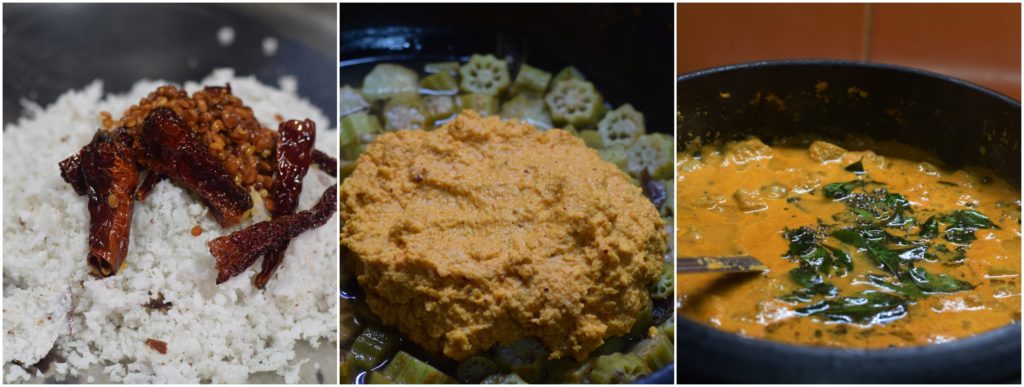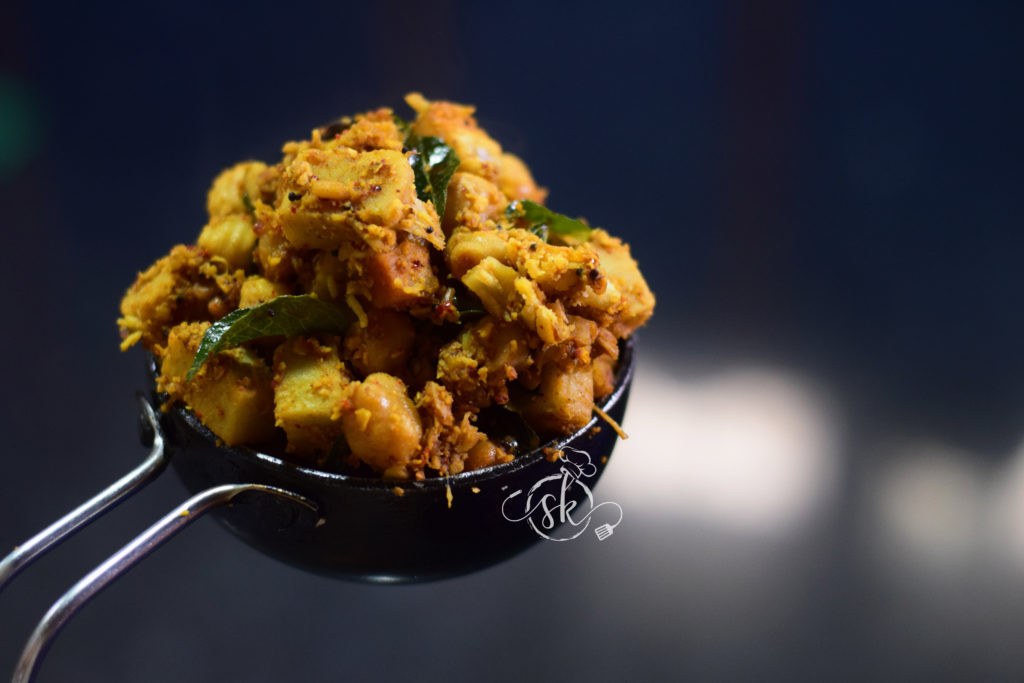Welcome to our culinary journey through traditional flavours! Today, I’m excited to share a cherished recipe celebrating simplicity and authenticity: Kanile Kappu Kadle Kodilu, which is nothing but Bamboo Shoot-Black Chana Sambar. This dish is from our traditional kitchen, without adding onion or garlic, making it both wholesome and flavorful. Join me as we explore this beloved recipe’s rich, aromatic layers, perfect for those who appreciate the delicate balance of traditional flavours and nutritious ingredients.
The recipe includes cooked dal, fibre-rich bamboo shoot chunks, black chana, and freshly roasted and ground coconut masala. The result tastes so fresh, and the crunchiness of the Bamboo shoot tantalizes the palate.

Ingredients:
Bamboo shoot – Sliced or chopped.
Black Chana – ½ cup (soaked)
Salt, jaggery to taste
Toor dal – ½ cup (cooked)
Fresh Coconut – 1 cup
Byadagi Red chillies – 4 to 6
Coriander seeds – 3 tsp
Cumin – 1 tsp
Methi – ¼ tsp
Hing- 1 pinch
Tamarind – one Amla size (soaked in water)
For the Seasoning: Coconut oil, Mustard, red chilli, and curry leaves.
Method:
-Slice or chop bamboo shoots; if you want to know how it is done, I have a blog post HERE.

-First, cook bamboo shoot chopping with abundant water; discard the water and keep the chopping ready.
-Cook soaked black chana with sufficient water; discard the water and use only chana.
-Now, put cooked chana and bamboo shoots, salt, jaggery, cooked dal, and tamarind water, and boil for some time. If needed, add a cup of water.
-In the meantime, prepare masala; take one small kadai, heat 1 tsp of oil, and put in methi seeds; when it turns light brown, add all the remaining masalas like coriander, cumin, hing, red chillies, and roast everything.

-Grind all these with coconut, make a smooth paste, and add it to the boiling veggies. Boil nicely. Adjust the consistency, either by adding water or salt.
-Add the tadka by heating coconut oil, mustard and curry leaves. Enjoy with Rice or Roti.































